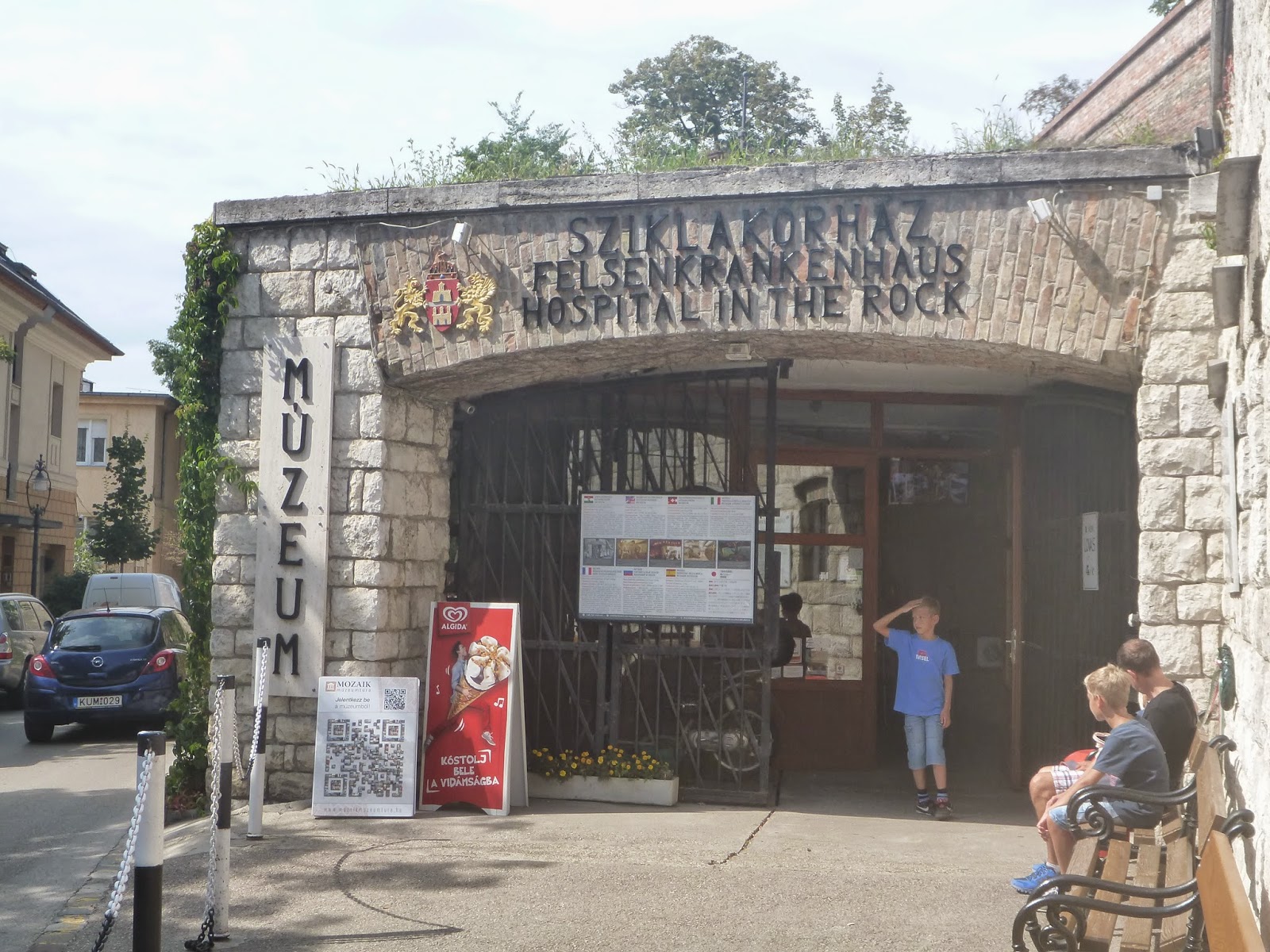On one of my days away from the conference I decided to visit some of the historic buildings of Budapest. I got up early and took a walk up Castle Hill where Buda Castle, Fisherman's Bastion and Matthias Church are located. On my way, I took a few 'token' photographs of the buildings and streets as I walked along. Most of the houses looked to be in reasonable condition, with some plaster and paint missing, and the roads had a few weeds growing in amongst the tarmac, but on the whole, everything looked beautiful.
After a short climb up the hill, I stopped and took some pictures of the amazing view. I got a lovely photo of the Chain Bridge crossing the Danube, and of the Hungarian Parliament Building, which sits right on the water's edge.
Once I had reached Buda Castle I realised how little it actually looks like a castle! It was completed in 1265, and has also been called Royal Palace - it definitely looks more like a palace than a castle (complete with stern looking guard outside), but is no longer used for its original purpose. The castle complex now houses the Hungarian National Gallery, Budapest History Museum, and the National Library. I didn't have time to go into any of them, as there were other places I wanted to visit. There were lots of tourists there though, so they must have been good!
There were several statues and fountains in the grounds of the castle. My favourite was the Matthias Fountain which depicts a group of hunters and their hounds led by King Matthias Corvinus, with a stag at his feet. It was damaged during the war, but has now been restored to its former glory. I think it was a favourite of everyone, as there were a lot of people taking photos.
The streets leading from the castle to Matthias Church were very picturesque. Narrow little streets all clean and well-kept, with houses painted in different colours. The church itself was very impressive and resembled more of a cathedral than a simple church. It was originally built in 1015, but none of the original building still remains. It was completely rebuilt in the 14th century, and again in the 19th century. It was very beautiful though, particularly the roof.

In the same complex as the castle and the church was Fisherman's Bastion. It was completed in 1902, but had to be restored after World War II. It is basically a viewing terrace, with great views over the Danube. The Bastion is named after the guild of fisherman that were tasked with defending that particular stretch of the city during the Middle Ages.
I then continued to wander around the complex (and took more photos of the streets) and came across the Museum of Military History (detailed in the next blog post), and the Church of Mary Magdalene. The tower of the church was of particular interest as you could see exactly where it had been damaged during World War II, and the different coloured stone used to repair it.

One last place that I feel needs a mention is the Hospital in the Rock, which I obviously enjoyed immensely! You weren't allowed to take photographs inside the museum, so I had to use a couple that I found on the internet, so I apologise if they're a bit fuzzy! The hospital was created inside the caverns under the Buda Castle, which are said to have originally been used as part of the penal system in centuries past. The hospital was developed to process the wounded and the dead during the 1944-1945 Siege of Budapest. Apparently it was built to house 60-70 patients, but at one point housed 600 wounded soldiers. In 1956 it was turned into a nuclear bunker in response to the uprising against Soviet rule, but it was never used. It is now a museum, with recreations of the war-time hospital wards and surgical theatres. There were lots of the old hospital machines and instruments on display, which I loved looking at. I think this was probably my favourite museum!
Budapest Part III to follow.....

















.jpg)

.jpg)
.jpg)
.jpg)

No comments:
Post a Comment